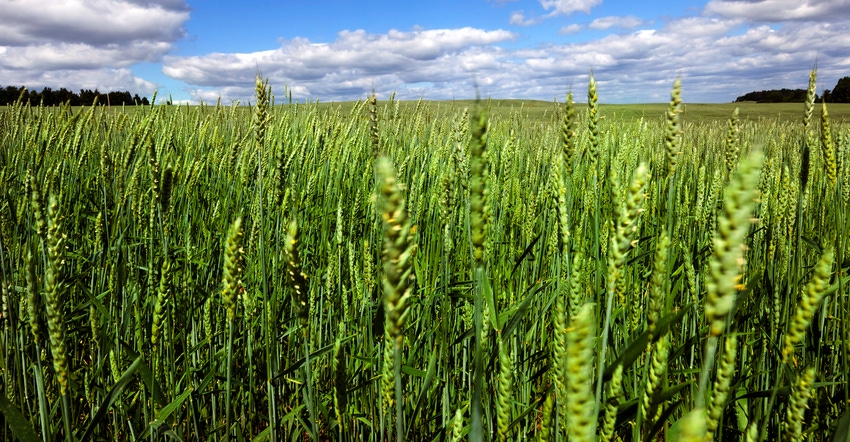March 25, 2020

Take a deep breath, we are about to start a new cropping season.
In southern areas of our region, the warm temperatures have started the winter forage. This is the crop that gives you the earliest and the highest quality forage for your animals. Now is the time to add nitrogen and sulfur, which can save you on soybean meal by allowing you to harvest high-protein forage.
Yield potential was set last fall, depending on planting date and available nitrogen. These two factors generate the number of fall tillers that help set the yield potential for the following spring (now).
Planting date is the most important factor, though. Even if you planted later, there is still potential for economical yields so long as the stand came through winter.
1. Provide sulfur for more protein. For any nitrogen application to winter forage, sulfur is critical for protein formation. As you can see in the graph below, adding extra nitrogen — 115 pounds — without sulfur only provided 12% crude protein. Adding a lesser amount of nitrogen with sulfur provided 17% crude protein.
For a field that did not get manure last fall (a major on-farm sulfur source) an effective ratio is roughly 1 pound of sulfur for every 10 pounds of nitrogen. A mix of 1,500 pounds of urea, treated with an antivolatilization agent and mixed with 500 pounds of ammonium sulfate, will give you approximately 40-0-0-6S. This is good for all cool-season grasses in addition to winter forage grains, such as triticale.
Sulfur is also critical for corn and especially sorghum, which can produce much higher protein in the forage.
2. Increase N application. With winter forages, our research has found that even if you immediately incorporate manure the previous fall before planting, an application of spring nitrogen is still needed.
In a study of triticale, spring fertilizer application didn’t increase the spring yield on manured ground but it did raise the crude protein from 9% to over 19%, which can potentially save money on soybean meal.
In our research, we found that injecting 12,000 gallons an acre of manure into triticale the previous fall using a rolling wavy coulter unit met the nitrogen needs of the crop for yield and generated 20% crude protein.
It is common for farms to apply between 75 and 100 pounds of nitrogen an acre in spring. Even if you applied manure before planting, we are suggesting you increase this to 125 pounds an acre to boost protein and save on soybean meal. Remember, a 3-ton dry matter yield at flag leaf stage will remove 192 pounds of nitrogen at 20% crude protein. What is not used by the winter forage will still be used by the next planted crop.
However, don’t try this higher rate on rye. Triticale is only two-thirds the height of rye and is resistant to lodging. Our trials have found that triticale yields 35% higher than rye because of the higher tiller density.
Rye has limited tillering and produces a tall but thinner stand. It is very prone to lodging when more than 50 pounds of nitrogen an acre are applied.
3. Watch for frozen ground. Do not apply nitrogen on snow-covered ground.
In past studies, we have found nitrogen losses as high as 44% with an average loss of 26.3% when applied to cold or frozen surfaces, especially if they have snow on them.
It is highly recommended to add an antivolatilization agent this spring. This will inhibit the urease enzyme from splitting the urea into ammonia that could be lost. We have found that urea loss in fields treated with an antivolatilization agent were 63% less than in fields that were untreated. The antivolatilization compound increases the chance of full return on your fertilizer money.
4. Know when to harvest. For those new to growing winter forage, you want to harvest it at the flag leaf stage (stage 9) for optimum quality. Stage 8 does not have higher quality than stage 9, and you can get a substantial yield hit from harvesting too soon.
If temperatures are warmer than normal, push to harvest the forage at the flag leaf stage. Conversely, if it is at stage 8 and there is a week of rain forecasted, get it cut so you have quality forage.
Kilcer is a certified crop adviser in Kinderhook, N.Y.
About the Author(s)
You May Also Like




